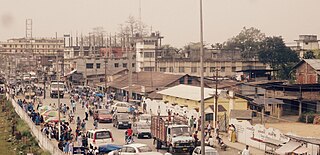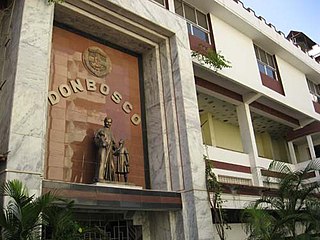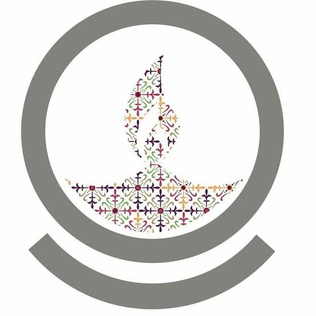
Assam is a state in northeastern India, south of the eastern Himalayas along the Brahmaputra and Barak River valleys. Assam covers an area of 78,438 km2 (30,285 sq mi). It is the second largest state in northeastern India by area and the largest in terms of population, with more than 31 million inhabitants. The state is bordered by Bhutan and Arunachal Pradesh to the north; Nagaland and Manipur to the east; Meghalaya, Tripura, Mizoram and Bangladesh to the south; and West Bengal to the west via the Siliguri Corridor, a 22-kilometre-wide (14 mi) strip of land that connects the state to the rest of India. Assamese and Boro are the official languages of Assam. Meitei (Manipuri) is the official language of Hojai district and the entirety of the Barak Valley region, while Bengali is an official language in the three districts of Barak Valley.

Assamese cuisine is the cuisine of the Indian state of Assam. It is a style of cooking that is a confluence of cooking habits of the hills that favour fermentation and drying as forms of preservation and those from the plains that provide extremely wide variety of fresh vegetables and greens, and an abundance of fish and meat. Both are centred on the main ingredient — rice. It is a mixture of different indigenous styles with considerable regional variations and some external influences. The traditional way of cooking and the cuisine of Assam is very similar to South-East Asian countries such as Thailand, Burma (Myanmar) and others. The cuisine is characterized by very little use of spices, little cooking over fire, and strong flavours due mainly to the use of endemic exotic fruits and vegetables that are either fresh, dried or fermented. Fish is widely used, and birds like duck, pigeon, squab, etc. are very popular, which are often paired with a main vegetable or ingredient; beef used to be eaten before British colonialism, and some continue to do so. Preparations are rarely elaborate. The practice of bhuna, the gentle frying of spices before the addition of the main ingredients so common in Indian cooking, is absent in the cuisine of Assam. The preferred oil for cooking is the pungent mustard oil.

Jorhat is an administrative district of the Indian state of Assam situated in the central part of the Brahmaputra Valley. The district is bounded by Majuli on north, Nagaland state on the south, Sivasagar on the east and Golaghat on the west. On the north of the district, the river Brahmaputra forms the largest riverine island of the world. The administrative seat is at Jorhat city.

Naharkatia is a town and a Municipal board in Dibrugarh district in the Indian state of Assam. It is well known for petroleum and gas reserves. Earlier, Duliajan, the head office town of Oil India Limited was in its circle. However, the towns are close, within a 30-minute journey.

The culture of Assam is traditionally a hybrid one, developed due to cultural assimilation of different ethno-cultural groups under various political-economic systems in different periods of its history.
The Board of Secondary Education, Assam commonly known as SEBA, is the state education regulatory board under the jurisdiction of Ministry of Education, Government of Assam for conducting examinations and providing assurance for the quality of education imparted in schools within Assam, India that are affiliated to it. It offers education in Bodo, English (IL), Assamese, Bengali, Hindi, Meitei (Manipuri), Hmar, Nepali, Mizo, Khasi, Garo, Karbi and Urdu languages.

Mekhela Sador is a traditional Assamese sarong traditionally worn by Assamese women.

Don Bosco Senior Secondary School is a school located in Guwahati, Assam. It is a Catholic school founded on the teachings of Saint John Bosco, and is run by the Salesians of Don Bosco. Started in 1948, Don Bosco is one of the leading private schools in the North-Eastern states. It operates 12 standards, divided into primary, middle, senior and senior secondary sections. The school is managed by a Principal, with Vice Principals and Teacher-Coordinators operating under him. The school houses 3000 students.
St. Mary's High School is a Missionary school in Barpeta Road, Assam, India. It is situated in the district of Barpeta in the state of Assam. Although primarily an English medium school, it also has Assamese medium classes. The English medium has classes starting from Nursery till the Class X while the Assamese medium has classes from Class I till Class X. Its present Principal is Sister Superior with Sister Adlyn as Headmistress and Sister vanumita as Assistant Headmistress. The school has a big campus. it is situated near Marian school and St Joseph school. The three schools are all connected to mission road.

Sainik School Goalpara, Assam, India, was established on 12 November 1964, under the Sainik Schools Society, New Delhi under the Ministry of Defence (India). The idea of Sainik schools were presented by the then Defence Minister V.K.Menon in 1961. The school was established in the town of Goalpara which is a district headquarter. Subsequently, the school was shifted to its present location at Rajapara Village in Mornai in Goalpara District. Initially 18 Sainik schools were founded.
Rameshwar Pathak was an acclaimed Kamrupi Lokgeet singer from Kamrup, Assam, India. He also worked as a teacher in Arya Vidyapeeth Higher Secondary and Multipurpose School, Guwahati from 1963 to 1996.
Boko is a town located in Assam, in the Kamrup district in the Indian state of Assam. The town is composed of 139 villages. It is approximately 55 kilometers west of Guwahati.
Bhaben Barua is an Assamese poet.
Jamugurihat is a town and a town area committee in Sonitpur district, in the Indian state of Assam. This is a newly planned city area by the Urban Development Authority of Assam. The town is located north of the Brahmaputra River. It is the location of the 200-year-old Baresahariya Bhaona festival.
All Tai Ahom Students Union (ATASU) or Chom Hom Lik Hen Tai Ahom Tang Mung in Ahom language is a students' union in Assam, India.
Keshab Ram Borah Higher Secondary School is an educational institute in the middle part of Majuli, Jorhat, Assam, India. It has both the high and Middle English section. Both the Keshab Ram Borah Higher Secondary School and Gereki Janajati Middle English School are situated in the same campus with a single school building.
Jhanji Hemnath Sarma College is a college situated in Jhanji, Sivasagar, Assam, India. It was founded on 25 July 1964. The college is affiliated with Dibrugarh University and recognized by the University Grants Commission.
Assam – 16th largest, 15th most populous and 26th most literate state of the 28 states of the democratic Republic of India. Assam is at 14th position in life expectancy and 8th in female-to-male sex ratio. Assam is the 21st most media exposed states in India. The Economy of Assam is largely agriculture based with 69% of the population engaged in it. Growth rate of Assam's income has not kept pace with that of India's during the Post-British Era; differences increased rapidly since the 1970s. While the Indian economy grew at 6 percent per annum over the period of 1981 to 2000, the same of Assam's grew only by 3.3 percent.
All Assamese Students' Association or AASA is a students' organisation for the students of Assam studying in Delhi. They have been organising various events and activities to hold and safeguard the culture and tradition of Assam in the Capital of India and adjacent regions.

Happy Child High School (HCHS) is a co-educational institution situated in Rehabari, Guwahati (Assam). It was established on 13 January 1980 by M. P. Aggarwal and Nirmal Aggarwal. It is affiliated with the Board of Secondary Education, Assam.









